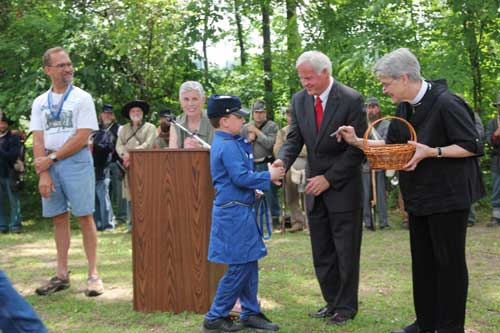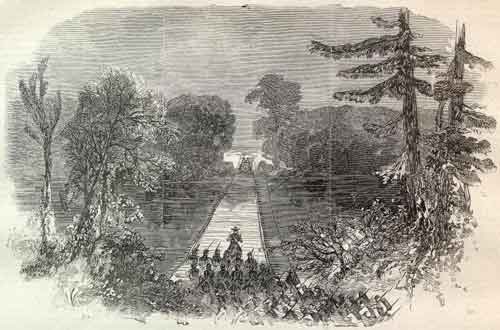|
Civil War Diary of Lt. W. R. Eddington The battle of Champion Hill, Mississippi was fought May 16, 1863 on Mrs. Championís farm near Edward station, Mississippi. The Lord was good to us that night. Just before dark a bunch of hogs ran through our company and we got one for Company A so we had something to eat. This was the 16th day on five day rations and we were beginning to feel a little bit slim. I have Mrs. Champions picture. That night the Rebels fell back about seven miles to Black River Bridge where they had more fortifications on the east side of Black River. Where they built the railroad bridge over the river, they had to go way back to start so the grade would not be too steep. It was a very long bridge built up on trussel [sic] work with a plank floor laid on it for wagons. When the Rebels fell back they left about 5000 of their men down on the east side of the river. The rest of them crossed over to the west side and burned the bridge. We followed up and May 17 the battle of Black River Bridge was fought. We captured about 5000 prisoners, seventeen cannons and all their army equipment. Before the fight began our regiment was sent down to the left to come up with the rear to prevent any of them escaping. Pretty soon the 60th Tennessee came down with their guns and their flag flying and when they saw us they threw down their guns, handed their flag over and surrendered. The 97th Illinois captured the 60th Tennessee. They were sent to Camp Butler as prisoners of war. A good many of them died there and are buried in the cemetery there. We killed so many of the Rebelís horses at Champion Hill that they could not move near all their cannons, so today we sent back horses and got them. We had to build a temporary bridge to cross the river on and gathered up the Rebel arms and the wreckage of the battle and burned it
A copy of the Diary of Lt. W. R. Eddington, "My Civil War Memories," was submitted to the Champion Heritage Foundation by Stanley Eddington II.
Cotton Bridge Over The Big Black River
| ||
|
| Home | Grant's March | Pemberton's March | Battle of Champion Hill | Order of Battle | Diaries & Accounts | Official Records | | History | Re-enactments | Book Store | Battlefield Tour | Visitors | Copyright (c) James and Rebecca Drake, 2014. All Rights Reserved. |

